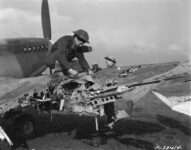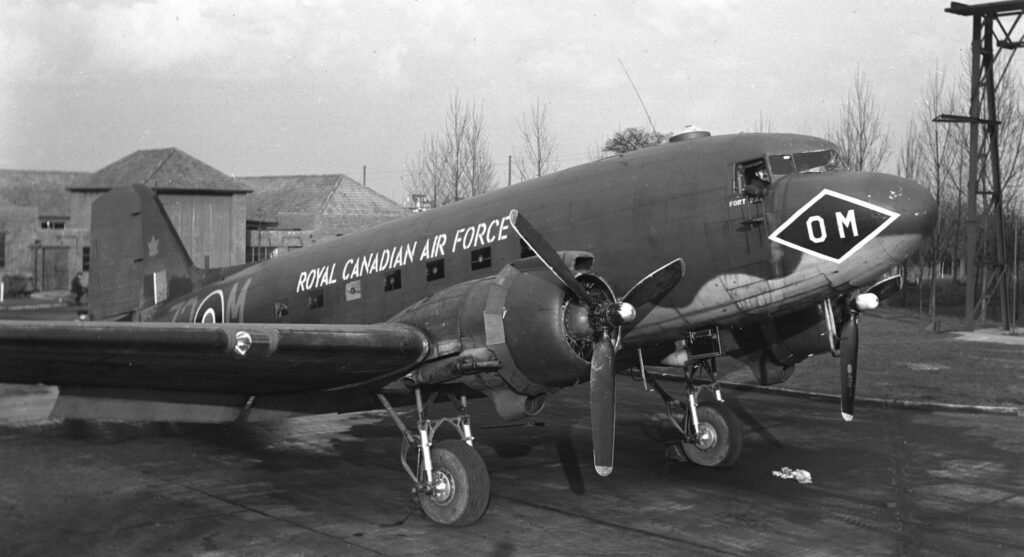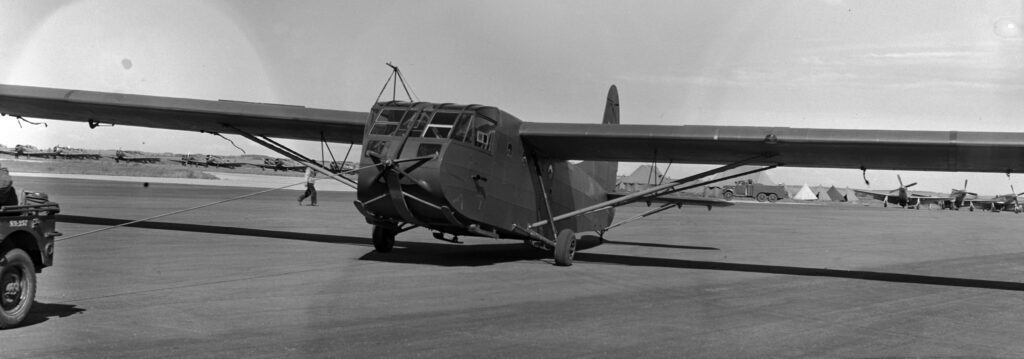
RCAF: Distinguished flying during Market Garden
September 17-25, 2024, marked the 80th anniversary of Operation Market Garden, the ill-fated attempt by the Allies to secure bridges over the Lower Rhine in the Netherlands.
More than 40,000 airborne troops from the United States, United Kingdom, Canada, and Poland either parachuted or landed by glider with the objective of establishing a crossing to allow Allied armour to cross directly into Germany.
Alongside their countrymen fighting on the ground, a number of Royal Canadian Air Force (RCAF) airmen also played a vital role in the operation. No. 437 Squadron RCAF, flying as part of No. 46 Group RAF, transported troops from the U.K. while 39, 126 and 127 RCAF Wings provided reconnaissance, fighter cover, and ground attack.


437 Squadron was formed just three days before the start of Market Garden at Blakehill Farm, Wiltshire, equipped with the Douglas DC-3 Dakota (the British designation of the C-47 Skytrain).
On September 17, the Squadron was tasked towing Airspeed Horsa gliders containing members of the British 1st Airborne Division across the Channel, to Arnhem. Twelve aircraft departed Blakehill Farm, each towing a Horsa. In total, 146 men, five jeeps, six trailers, two handcarts, three wireless sets, 16 bicycles, and 10 motorcycles were flown to the Netherlands.
Shy of one aircraft being forced to return prematurely, the mission went without a hitch. Over the next few days 437 Squadron flew resupply missions. Sadly, on September 21, the Squadron lost six aircraft, five shot down and a sixth crash-landing. Two days later another aircraft was downed, with the loss of all eight onboard.
During Market Garden the squadron lost a total of 12 aircrew and four further taken prisoner. For their efforts during the battle two members of 437 were awarded the Distinguished Flying Cross and a third a Distinguished Flying Medal.


Supporting the airborne assault and working under No. 83 Group RAF, were a number of RCAF fighter units. At least 401, 411, 412, 416, 421, 430, 438, 439, 440, 441, 442, 443 Squadrons were involved, with Canadian pilots also flying missions as members of Royal Air Force (RAF) squadrons.
These squadrons and pilots flew Supermarine Spitfires, North American P-51 Mustangs and Hawker Typhoons on fighter-sweep and air-to-ground sorties.
No. 83 Group flew in excess of 1,700 fighters and 1,300 support and reconnaissance missions during Market Garden. At least eight Canadian pilots were shot down or killed during flying fighter or recce missions.


Canadians serving with the RAF’s Bomber Command participated in bombing missions over the area ahead of the landings, though sadly not without sacrifice. Five RCAF members were killed during a raid on the city of Moerdijk when two Avro Lancasters collided.
Operation Market Garden ultimately failed to achieve its primary objective.
Though the Dutch cities of Eindhoven and Nijmegen were liberated, the aim to drive into Germany and end the war months early did not succeed.
An estimated 17,000 Allied troops were killed or injured during the operation. The RCAF played a vital role in securing the limited successes of Market Garden and no less than 15 Canadian squadrons rightfully claim the campaign as a battle honour.



